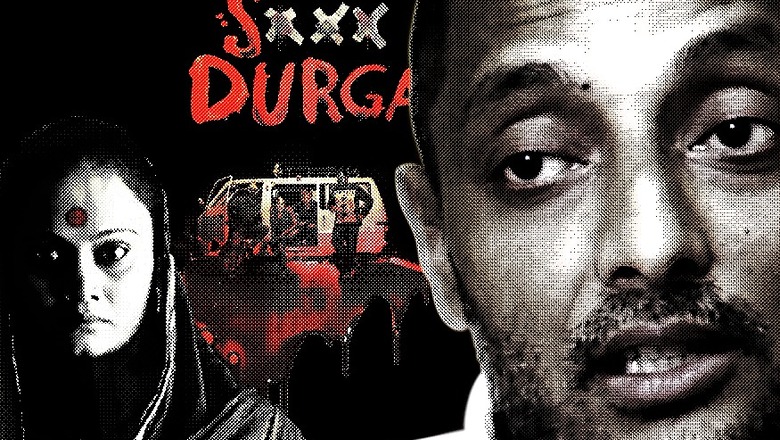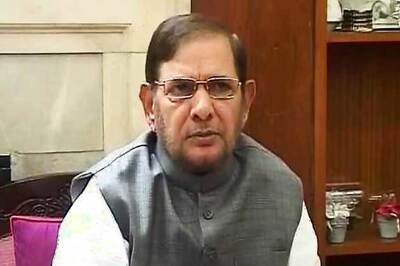
views
The Panorama of the International Film Festival of India (IFFI) has had an unenviable history of troubles. For one, Panorama which is meant to showcase the cream of Indian cinema and which, according to me, is the most important section in the entire Festival, is more often than not given a step-motherly treatment. If its screening venues are not quite up to the mark (this was certainly the case when the Festival used to be held at Delhi's Siri Fort every other year, till it got a permanent place at Goa's Panaji), the way movies are picked for this category is nothing short of sham. It is not very difficult to point fingers at the jury, some of whom have no business to be on it in the first place. What is more, I have seen – whenever I have served on the Panorama jury – squabbles about regionalism. Fellow jurors would ask me why a Tamil like me was not pushing for a Tamil film. I have to keep telling them that this is an Indian Panorama, not a Tamil Panorama or a Bengali Panorama or a Marathi... This is not about all. There have been several occasions when the director and producer of a film not chosen for this section going to court.
So, I am not at all surprised that this year a new kind of problem has arisen. The Panorama jury, headed by an eminent director like Sujoy Ghosh (with some decent works like Kahani, Kahani 2 and Satyanweshi), aided by helmers like Nikhil Advani and Gyan Correa, chose 21 titles (the maximum number under this category) from the 153 submitted in an exercise lasting about 18 days. But two of these movies – S Durga (name amended from Sexy Durga) and Nude – were taken off the list by the Information and Broadcasting Ministry without even a by your leave.
Ghosh, who was understandably upset over his 13-member jury's decision being over-ridden by the Ministry – which in charge of the Festival and the National Film Development Corporation of India's Film Bazaar, both beginning this year on November 20 – has resigned. With the jury's work having been over some weeks ago, the resignation will merely serve as a form of protest, nay a strong protest.
It is sad that having appointed a jury, putting it up in a five-star Mumbai hotel and having spent money from the public exchequer, the Ministry ought to have brazenly dropped the two movies.
I am told that such a step violates Clause 8.5 of the Indian Panorama 2017 Regulation, which clearly states that "the decision of the juries shall be final and binding, and no appeal or correspondence regarding their decision shall be entertained".
The Ghosh panel had reportedly told the Government that an explanation must be given in the event of any change in the list. But no such thing was done, and obviously the members of the jury are peeved over the fact that having taken time off from their busy schedules and sat through hours and hours of screenings, their choice was tampered with.
What is more, the panel was not even consulted before a couple of replacements were decided to fill in the slots which went vacant after S Durga (in Malayalam) and Nude (Marathi) were banished from the list.
I have not seen Nude, but have read reports about it. Directed by the National Film Award winner, Ravi Jadhav, the film is based on his own experiences as a student of the Sir JJ School of Art in Mumbai. It tells the story of a poor woman who works as a model without letting her family know about it. Jadhav has said that the nudity in his movie “is presented aesthetically". There is nothing offensive or titillating.
In fact, Ghosh and his team suggested that Nude open the Indian Panorama. But this honour has now been given to Vinod Kapri's Pihu – about a two-year-old girl left alone at home. (Does this remind you of Home Alone?)
Sanal Sasidharan's S Durga (originally titled Sexy Durga) – which I have seen – is a movie that should have never been dropped from the Panorama. The young helmer, Sasidharan, who had earlier made a gripping work called An Off-Day Game (whose climax was completely unanticipated), has given us an equally mesmeric S Durga. Here we see a young couple running away perhaps from home and trying to thumb a lift on a lonely road in the middle of the night. They have to reach a train station, and are on their way to Chennai, and a small van stops by and picks them up. There are two sozzled men in it, and this is the beginning of the couple's nightmarish night.
Mind you, Sasidharan does not throw in violence, not at all. No rape here. No fights. No sickles. But the helmer's marvellous way of hinting at violence instills a deep sense of fear not only in the man and the woman, but also in the viewer. I remember watching the work with some unease – uneasy about the million things that can go wrong that night on the Kerala highway. Will the man be beaten up, or worse killed? Will the woman be raped? But no, nothing of this sort happened. What Sasidharan conveyed in somewhat classic Hitchcockian style was the fear of fear. The fear of something terrible happening. This can be far more unnerving than actual violence.
It is about time that the Ministry takes Panorama more seriously – by appointing a respectable jury (I remember a year when I was part of it when the chairman and one of the members never watched a single film but turned up on the day of voting!) and, what is more, respecting its verdict.
Let us not forget that the Panorama is often considered as the gem of the Festival, and, therefore, deserves the pride of place.
(Gautaman Bhaskaran is an author, commentator, and movie critic who has covered Cannes alone for 28 years, and IFFI for three decades.)




















Comments
0 comment